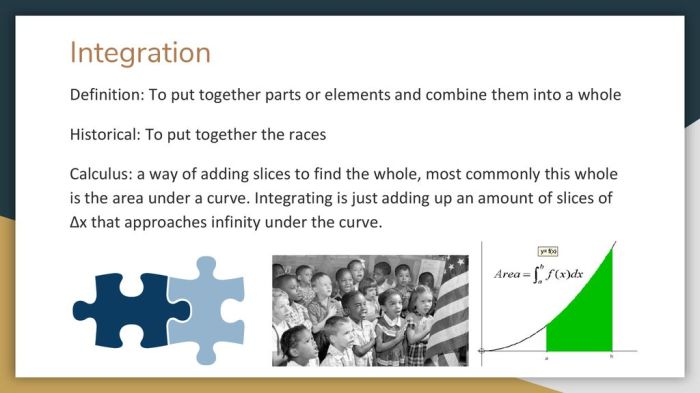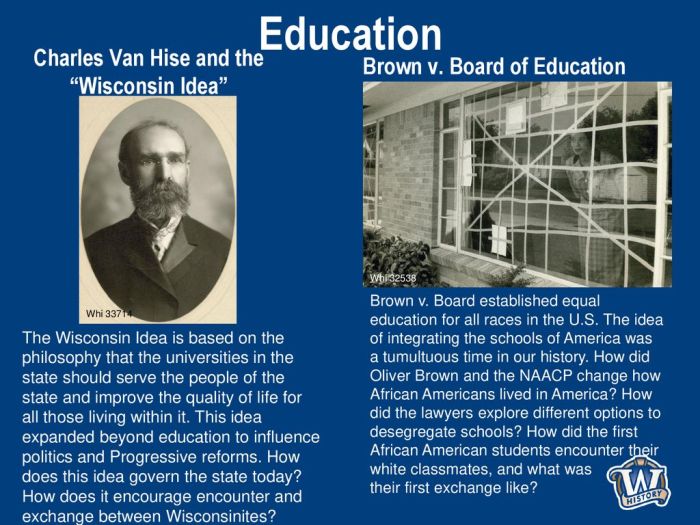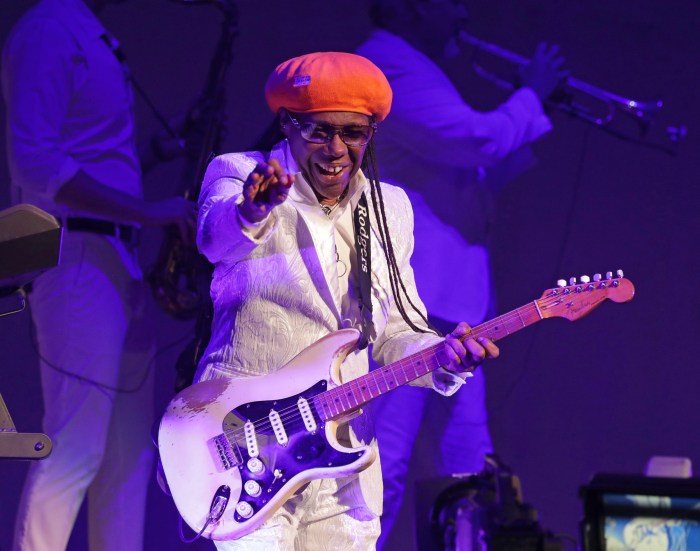Get ready to groove, because we’re diving deep into the heart of Jazz! This ain’t your average music history lesson. We’re talkin’ about the birth of a sound that shook up the world, the legends who made it iconic, and the cities that became its soul.
It’s a story of creativity, innovation, and a whole lot of heart, all fueled by the power of music to bring people together.
From the melting pot of New Orleans to the bustling streets of New York City, Jazz’s story is interwoven with the fabric of American history. It’s a tale of cultural fusion, where blues, ragtime, and European traditions collided to create something truly unique.
We’ll explore the legendary figures who shaped the genre, from Louis Armstrong’s infectious joy to Miles Davis’s cool revolution. And we’ll discover how Jazz not only entertained but also played a crucial role in challenging racial barriers and promoting integration.
The Birth of Jazz

Jazz, a musical genre that has captivated audiences for over a century, didn’t just appear out of thin air. Its roots lie in the rich cultural tapestry of New Orleans, a city brimming with diverse influences. This melting pot of cultures, each with its own unique musical traditions, served as the fertile ground where Jazz was born.
A Fusion of Cultures
New Orleans in the late 19th and early 20th centuries was a vibrant hub of musical innovation. The city’s unique blend of African, European, and Caribbean influences created a musical landscape unlike any other. The rhythmic energy of African music, the soulful melodies of the blues, and the sophisticated harmonies of European classical music all played a part in shaping the sound of Jazz.
Key Musical Influences
- Ragtime:Ragtime, a syncopated piano style popularized by composers like Scott Joplin, provided Jazz with its signature rhythmic drive. Ragtime’s syncopated rhythms, with their emphasis on off-beats, became a cornerstone of Jazz’s unique sound.
- Blues:The blues, with its expressive vocal delivery and melancholic melodies, infused Jazz with a raw emotional depth. The blues’ emphasis on improvisation and storytelling resonated deeply with Jazz musicians, who incorporated these elements into their own performances.
- European Musical Traditions:European musical traditions, particularly those from France and Spain, contributed to Jazz’s harmonic sophistication. The use of complex chord progressions and melodic structures added a layer of sophistication to the music, distinguishing it from its more rudimentary roots.
Early Jazz Pioneers
- Buddy Bolden:Often referred to as the “father of Jazz,” Buddy Bolden was a cornet player whose energetic performances and improvisational skills laid the groundwork for the genre. His music, characterized by its powerful sound and infectious rhythms, captivated audiences in New Orleans and beyond.
Yo, dig this: Jazz, it’s like the coolest story ever told. From its roots in New Orleans to its global impact, it’s all about rhythm, improvisation, and bringing people together. Think of it as the musical melting pot where different cultures and styles blended, creating something totally unique.
Need a chill vibe to help you absorb all that history? Check out this awesome coloring book with cute fairies. It’s like a stress-free zone for your mind, just like jazz is for your soul. So, get your coloring pencils ready, and let the musical journey begin!
- Jelly Roll Morton:A gifted pianist and composer, Jelly Roll Morton played a key role in developing the early forms of Jazz. His compositions, such as “King Porter Stomp” and “Black Bottom Stomp,” helped to establish the genre’s distinctive style.
- Louis Armstrong:One of the most influential Jazz musicians of all time, Louis Armstrong’s virtuosity on the trumpet and his improvisational brilliance helped to elevate Jazz to new heights. His signature scat singing and his warm, expressive tone became synonymous with the genre.
Jazz Legends

Jazz music wouldn’t be what it is today without the innovative and influential musicians who shaped its sound and pushed its boundaries. These legends, with their unique styles and undeniable talent, left an indelible mark on the world of music.
Let’s dive into the stories of some of the most influential figures in Jazz history.
Louis Armstrong: The King of Jazz
Louis Armstrong, born in 1901, was a trumpet player, singer, and bandleader who is considered one of the most important figures in Jazz history. His incredible improvisational skills, infectious energy, and warm, charismatic personality made him a beloved figure worldwide.
Armstrong’s early career was marked by his time with the groundbreaking band, the Hot Five, where he honed his skills and developed his signature style. His signature trumpet sound, characterized by its rich tone and melodic phrasing, became instantly recognizable and influenced countless trumpet players who followed in his footsteps.
Armstrong’s innovative use of scat singing, where he replaced lyrics with improvised vocalizations, revolutionized Jazz vocals and opened up a new world of vocal expression for future singers. Beyond his musical contributions, Armstrong was a cultural icon, representing the vibrancy and joy of Jazz to the world.
His influence extended beyond music, becoming a symbol of American culture and a champion for racial equality.
Jazz, man, it’s a story of struggle, innovation, and soul. From the streets of New Orleans to the smoky clubs of Harlem, it was a way for people to express themselves and connect, breaking down barriers and bringing folks together.
And just like those early jazz musicians, you gotta hustle to make your dreams a reality. If you’re crafting something cool, you gotta get the word out, and Crafting Your Income How to Market Your Handmade Products is a great resource for learning how to market your skills.
So, get out there, find your groove, and let your talent shine! Just like the legends of jazz, you can make a difference and leave your mark on the world.
Duke Ellington: The Master of Swing
Duke Ellington, born in 1899, was a bandleader, composer, and pianist who brought a new level of sophistication and elegance to Jazz. His band, the Duke Ellington Orchestra, was renowned for its intricate arrangements, sophisticated harmonies, and infectious swing rhythms.
Ellington was a prolific composer, writing over 1,000 songs, including iconic pieces like “Take the ‘A’ Train,” “Mood Indigo,” and “Caravan.” These compositions showcased Ellington’s ability to blend traditional Jazz elements with classical influences, creating a unique and captivating sound.
Yo, dig this! Jazz history is a wild ride, man. From the streets of New Orleans to the smoky clubs of Harlem, this music was all about breaking barriers and bringing people together. And you know what’s a great way to capture the energy of jazz?
Drawing! Check out The XXL How To Draw Book for Beginners & Pros Countless Drawings to Sketch incl. Step-by-Step Instructions & Techniques with 3 Difficulty Levels for Adults Adolescents & Kids for some serious inspiration. You can sketch those legendary jazz cats like Louis Armstrong or Ella Fitzgerald and get a feel for the raw passion of this music.
So grab your pencils and get ready to groove with jazz history!
Ellington’s arrangements were masterful, featuring complex counterpoint and extended harmonies, pushing the boundaries of Jazz composition. His music transcended racial barriers, gaining popularity among both Black and white audiences, contributing to the integration of American society. Ellington’s legacy continues to inspire musicians and audiences alike, reminding us of the power of Jazz to unite and inspire.
Billie Holiday: The Lady in Satin
Billie Holiday, born in 1915, was a singer with a voice that captured the raw emotion and vulnerability of Jazz. Her unique style, characterized by her soulful phrasing, subtle improvisations, and intimate delivery, set her apart from other singers of her time.
Holiday’s music often explored themes of love, loss, and social injustice, reflecting the struggles of the African American community during the Jim Crow era. Her most famous song, “Strange Fruit,” a haunting ballad about the lynching of Black people in the South, became an anthem of the Civil Rights movement.
Holiday’s music, while beautiful, was often tinged with melancholy, reflecting her own personal struggles with addiction and racism. Despite facing adversity, she remained a powerful voice for social justice, using her music to raise awareness and inspire change.
Miles Davis: The Innovator
Miles Davis, born in 1926, was a trumpeter and bandleader who constantly pushed the boundaries of Jazz. His career spanned over four decades, during which he led the development of several significant Jazz subgenres, including bebop, cool Jazz, modal Jazz, and fusion.
Davis’s musical style was characterized by his innovative use of space, silence, and dissonance, creating a unique and challenging sound that captivated audiences. Davis was a master of improvisation, using his trumpet to explore new harmonies and rhythms, pushing the limits of traditional Jazz.
He was also a visionary bandleader, assembling talented ensembles that helped shape the sound of Jazz for generations. Davis’s influence on Jazz was profound, his relentless pursuit of innovation inspiring countless musicians to experiment and explore new sonic territories.
Jazz, man, it’s the soundtrack of America’s soul! From the smoky clubs of New Orleans to the swinging big bands of the 20s, this music brought people together and broke down barriers. If you wanna dive into the history of this incredible genre, check out Download And Listen Here for a seriously cool journey through the origins, legends, and cities that shaped jazz.
You’ll be grooving to the rhythm of history in no time!
Jazz Cities

Jazz, a musical genre that burst onto the scene in the early 20th century, wasn’t confined to one place. It blossomed in various cities across the United States, each contributing its own unique flavor to the musical tapestry. These cities became centers of creativity, attracting musicians from all walks of life and fostering an environment where innovation and experimentation thrived.
Jazz Cities: Centers of Creativity
The following table provides a glimpse into the vibrant jazz scenes that emerged in some of the most iconic cities in the United States.
| City | Significance | Unique Musical Styles | Prominent Musicians |
|---|---|---|---|
| New York City | The Big Apple, as it’s known, became the epicenter of jazz in the 1920s and 1930s. The city’s diverse population and bustling nightlife provided a fertile ground for jazz to flourish. Harlem, a predominantly African American neighborhood, became a focal point for jazz, hosting numerous clubs and venues that attracted musicians from all over the country. | Swing, bebop, and hard bop emerged from the city’s vibrant jazz scene. | Duke Ellington, Count Basie, Charlie Parker, Dizzy Gillespie, Thelonious Monk, Miles Davis, John Coltrane, and many others. |
| Chicago | Chicago’s jazz scene was heavily influenced by the city’s large African American population and its vibrant blues tradition. The city’s many clubs and dance halls provided a platform for musicians to showcase their talents, and the city’s proximity to New Orleans made it a natural destination for jazz musicians traveling north. | Chicago jazz was characterized by its blend of blues and ragtime influences, and its focus on improvisation and virtuosity. | Louis Armstrong, King Oliver, Jelly Roll Morton, Earl Hines, and many others. |
| Kansas City | Kansas City’s jazz scene developed in the early 20th century, fueled by the city’s bustling nightlife and its location at the crossroads of the blues, ragtime, and jazz traditions. The city’s many clubs and dance halls attracted musicians from all over the country, and the city’s proximity to the Mississippi River made it a natural hub for music and culture. | Kansas City jazz was known for its swinging, blues-infused style, and its emphasis on improvisation and ensemble playing. | Count Basie, Charlie Parker, Lester Young, and many others. |
| New Orleans | New Orleans is considered the birthplace of jazz. The city’s unique blend of African, European, and Caribbean influences created a musical melting pot that gave birth to jazz. The city’s street parades, brass bands, and its lively nightlife provided a fertile ground for jazz to flourish. | New Orleans jazz was characterized by its syncopated rhythms, its use of improvisation, and its blend of blues, ragtime, and European musical influences. | Louis Armstrong, Jelly Roll Morton, King Oliver, and many others. |
The Impact of Jazz
Jazz, born in the melting pot of New Orleans, quickly transcended its humble beginnings to become a global phenomenon, shaping not only American popular culture but also the very fabric of society. It was more than just music; it was a voice for the voiceless, a platform for artistic expression, and a catalyst for social change.
Jazz as Entertainment
Jazz was born in the streets, in the brothels, and in the bars of New Orleans, a city where different cultures and musical traditions collided. It was a music of improvisation, of spontaneity, and of raw emotion, a stark contrast to the more structured and formal European classical music that dominated the musical landscape at the time.
Jazz was a music for the people, a music that spoke to their hearts and their souls. It was a music that could make you dance, make you cry, and make you think. As Jazz spread across the United States, it became a staple of American popular culture.
Jazz clubs sprang up in major cities, from New York to Chicago to Los Angeles. Jazz musicians became celebrities, their names synonymous with the sound of the era. Jazz music was featured in films, on radio, and on television.
It became the soundtrack of American life.
Jazz as a Catalyst for Social Change
Jazz was more than just a form of entertainment. It was also a powerful tool for social change. During the Jim Crow era, when racial segregation was the law of the land, Jazz musicians used their music to challenge the status quo.
They sang about the injustices of segregation, the pain of discrimination, and the hope for a better future.
“Jazz is a music of freedom. It is a music that allows us to express ourselves without fear of censorship.”
Miles Davis
Jazz musicians often faced discrimination and prejudice, but they refused to be silenced. They used their music to raise awareness about social issues and to inspire others to fight for equality.
Examples of Jazz Musicians Using Music to Express Social and Political Messages
- Billie Holiday, a legendary Jazz vocalist, used her music to address issues of racial injustice and the plight of African Americans in America. Her song “Strange Fruit” is a haunting and powerful indictment of lynching in the South. It was a song that shocked and angered many, but it also helped to raise awareness about the brutality of racism.
- Nina Simone, another iconic Jazz singer, was a vocal advocate for civil rights. She used her music to challenge racism and to inspire people to fight for equality. Her song “Mississippi Goddam” is a powerful and angry protest against the violence and oppression that African Americans faced in the South.
- John Coltrane, a renowned Jazz saxophonist, was a spiritual seeker who used his music to explore themes of love, peace, and unity. His music was deeply influenced by his spiritual beliefs, and he often used his music to express his desire for a better world.
Book Review: Exploring Jazz History

The history of jazz is a fascinating journey through the evolution of a musical genre that has captivated audiences for over a century. There are many books available that explore this rich history, and one that stands out for its comprehensive and insightful approach is “The History of Jazz” by Ted Gioia.This book is a valuable resource for anyone interested in learning about the origins, development, and impact of jazz.
Gioia, a renowned jazz critic and scholar, provides a detailed and engaging account of jazz’s journey from its roots in African American communities to its global influence.
Key Themes
Gioia’s book explores several key themes that are essential to understanding jazz history. The book delves into the complex relationship between jazz and race, highlighting how the genre emerged from the experiences of African Americans in the United States. It also examines the role of improvisation in jazz, showcasing how this element has been central to the genre’s evolution and appeal.
Furthermore, the book explores the interplay between jazz and other musical genres, demonstrating how jazz has been influenced by and has influenced other styles, including blues, gospel, and rock and roll.
Strengths
One of the strengths of Gioia’s book is its comprehensive coverage of jazz history. The book spans from the genre’s early beginnings in the late 19th century to its contemporary manifestations. Gioia examines the major figures, styles, and events that have shaped jazz, providing a detailed and informative overview of the genre’s evolution.
Another strength is the book’s accessibility. Gioia writes in a clear and engaging style that makes complex historical information readily comprehensible to readers with varying levels of knowledge about jazz. He also incorporates anecdotes and personal stories that bring the history to life, making it more relatable and engaging.
Weaknesses
While Gioia’s book is comprehensive and insightful, it does have some limitations. One weakness is its focus on American jazz. While the book acknowledges the global influence of jazz, it primarily concentrates on the genre’s development in the United States.
This focus can limit the book’s scope, particularly for readers interested in exploring the diverse global jazz scene. Another weakness is the book’s lack of detailed analysis of the social and political context surrounding jazz. While Gioia touches on these aspects, he does not delve deeply into the complex social and political forces that have shaped the genre’s history.
Personal Insights
Gioia’s book has significantly enhanced my understanding of jazz history. The book’s comprehensive coverage of the genre’s origins, development, and impact has provided me with a deeper appreciation for the complex and fascinating story of jazz. I particularly appreciate Gioia’s emphasis on the role of improvisation in jazz, as this element has always fascinated me.
The book has also made me more aware of the social and political context surrounding jazz, which has given me a greater understanding of the genre’s significance and influence.
Ultimate Conclusion

So, whether you’re a seasoned Jazz aficionado or just curious about this incredible musical legacy, buckle up for a ride through the history of Jazz. This ain’t just about music; it’s about the stories, the struggles, the triumphs, and the enduring spirit that continues to inspire us today.
Get ready to feel the rhythm, and let the music move you.
Clarifying Questions
What are some of the key differences between the Jazz styles of New Orleans and New York City?
New Orleans Jazz is known for its lively, improvisational style, often featuring a strong brass section. New York City Jazz, particularly in the bebop era, developed a more sophisticated and complex sound, emphasizing improvisation and intricate chord changes.
How did Jazz contribute to the Civil Rights Movement?
Jazz became a powerful symbol of racial equality and a platform for social commentary. Musicians like Billie Holiday and Nina Simone used their music to express the struggles of African Americans and advocate for civil rights.
Is there a particular Jazz genre that is most popular today?
While traditional Jazz styles remain popular, contemporary Jazz continues to evolve, incorporating elements of funk, rock, and electronic music. Genres like smooth jazz and acid jazz have gained significant popularity in recent years.
What are some good resources for learning more about Jazz history?
There are many excellent books, documentaries, and online resources available. The National Endowment for the Arts, the Smithsonian National Museum of American History, and the Jazz at Lincoln Center website are great starting points.

